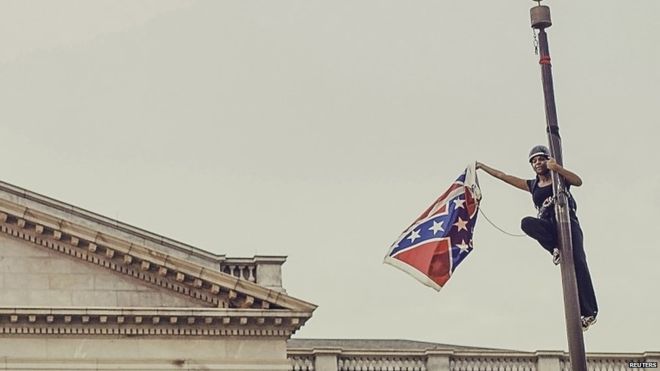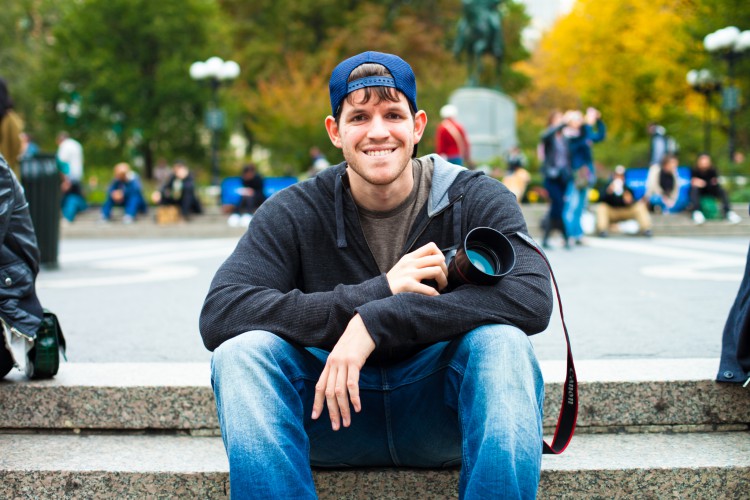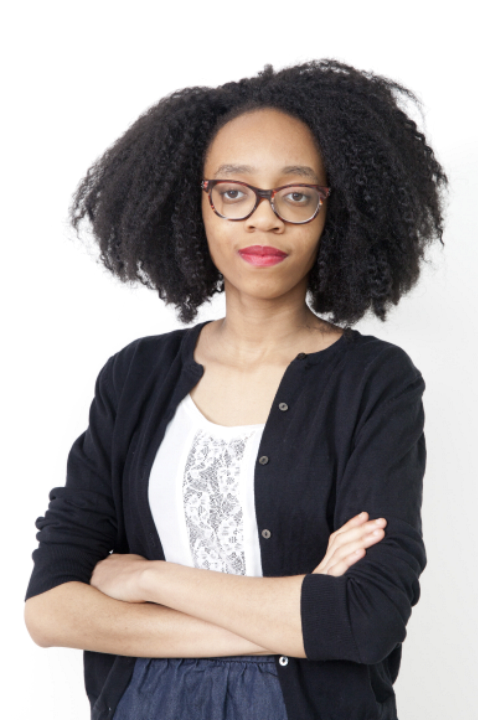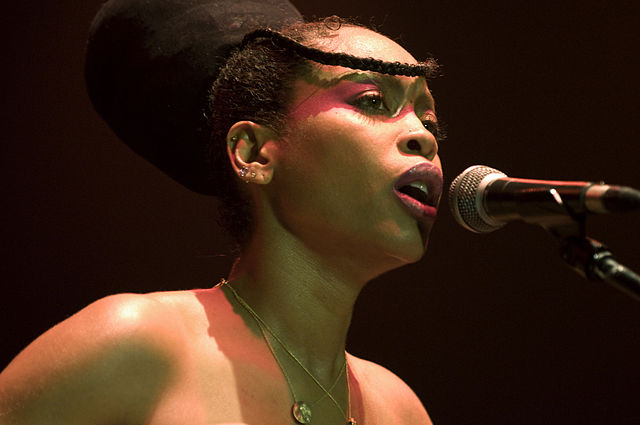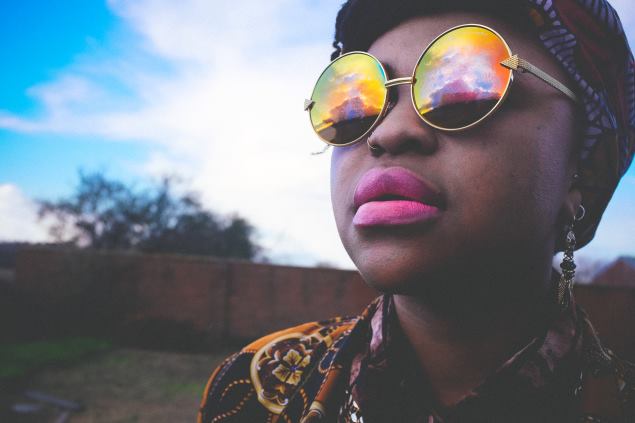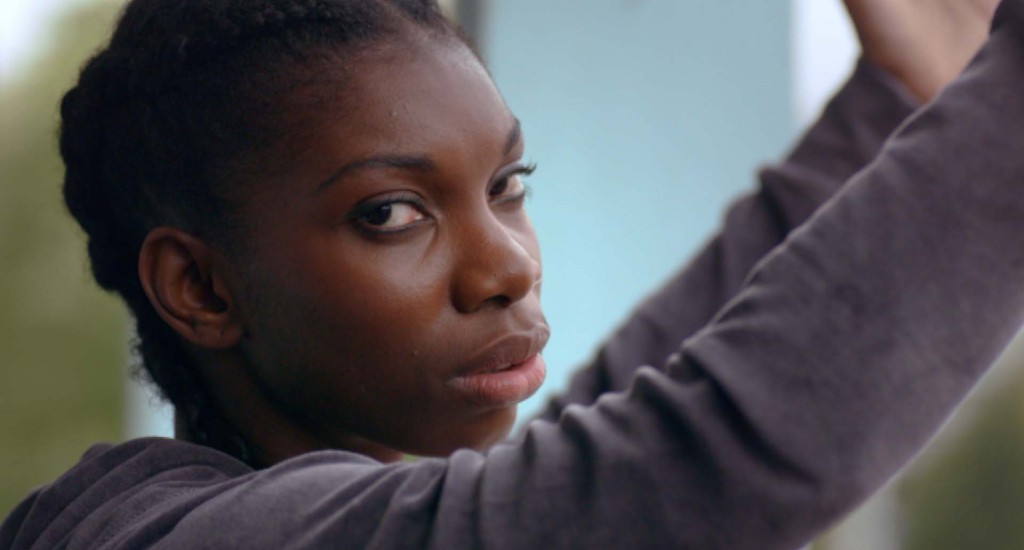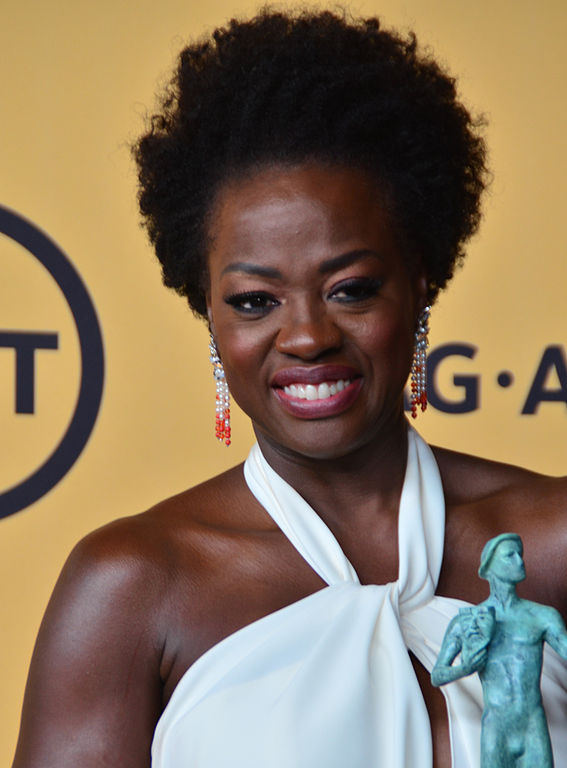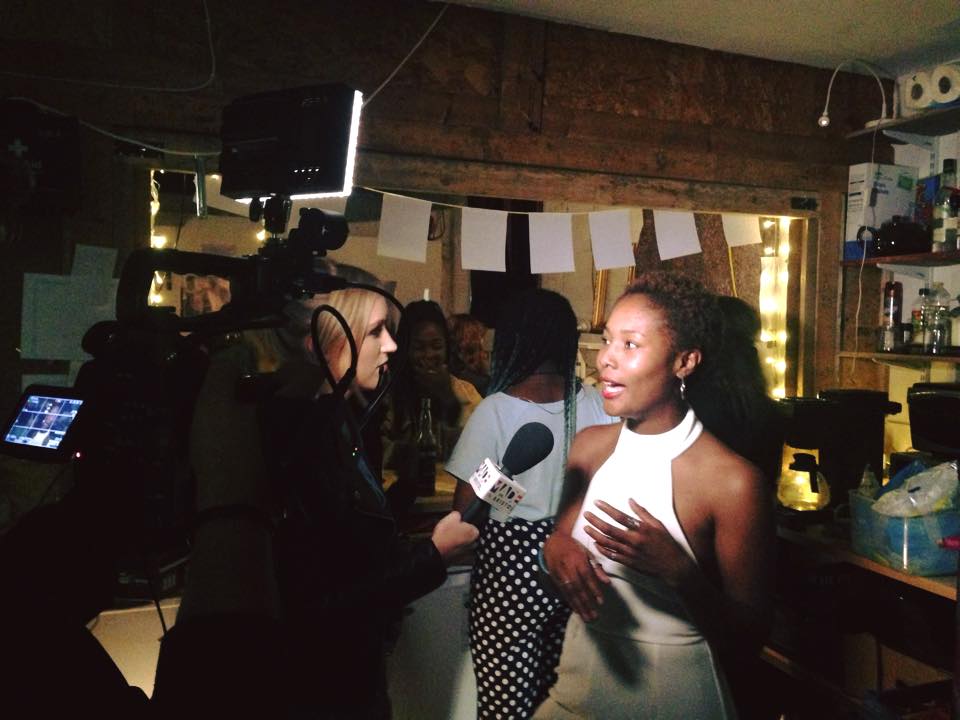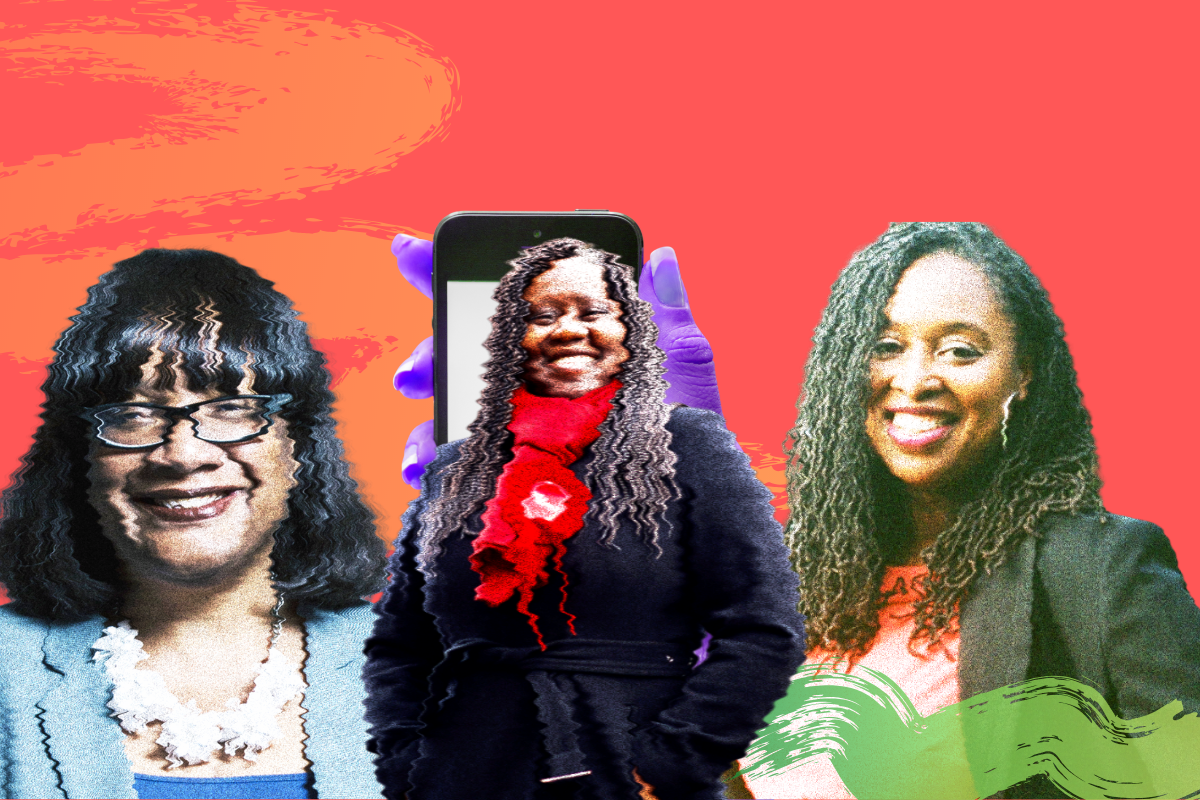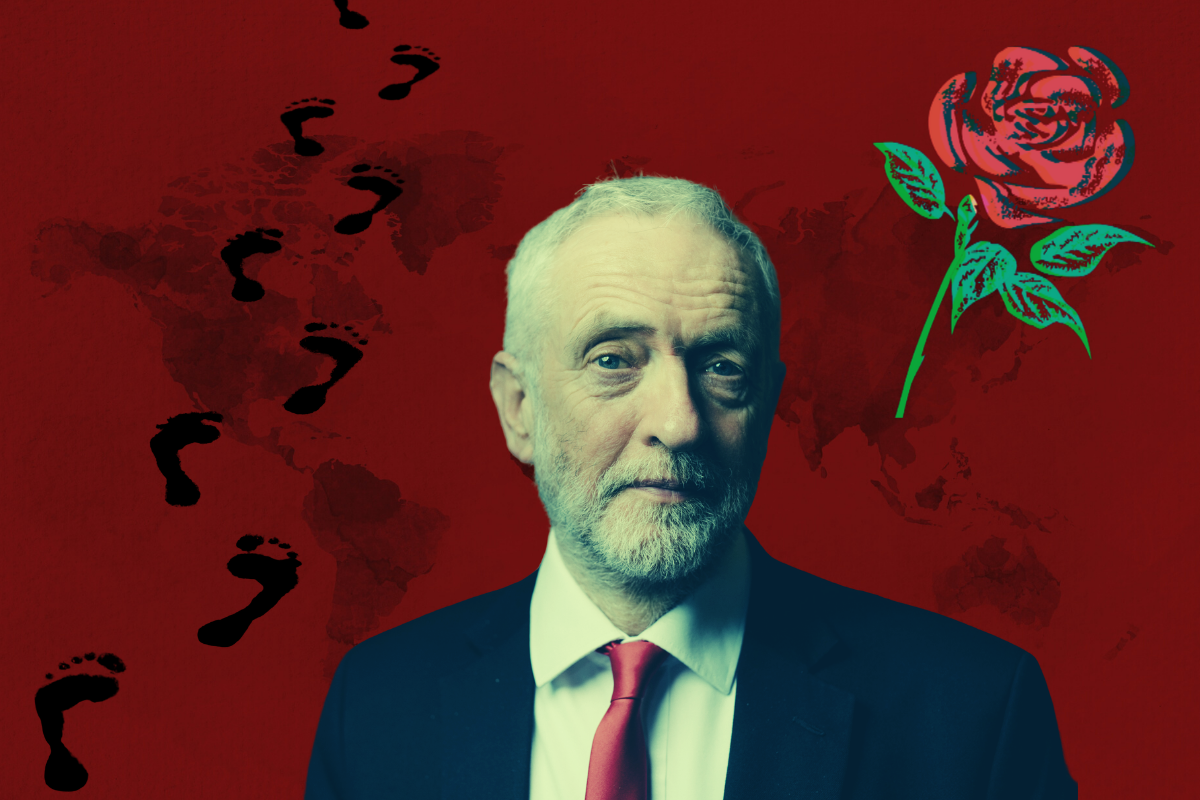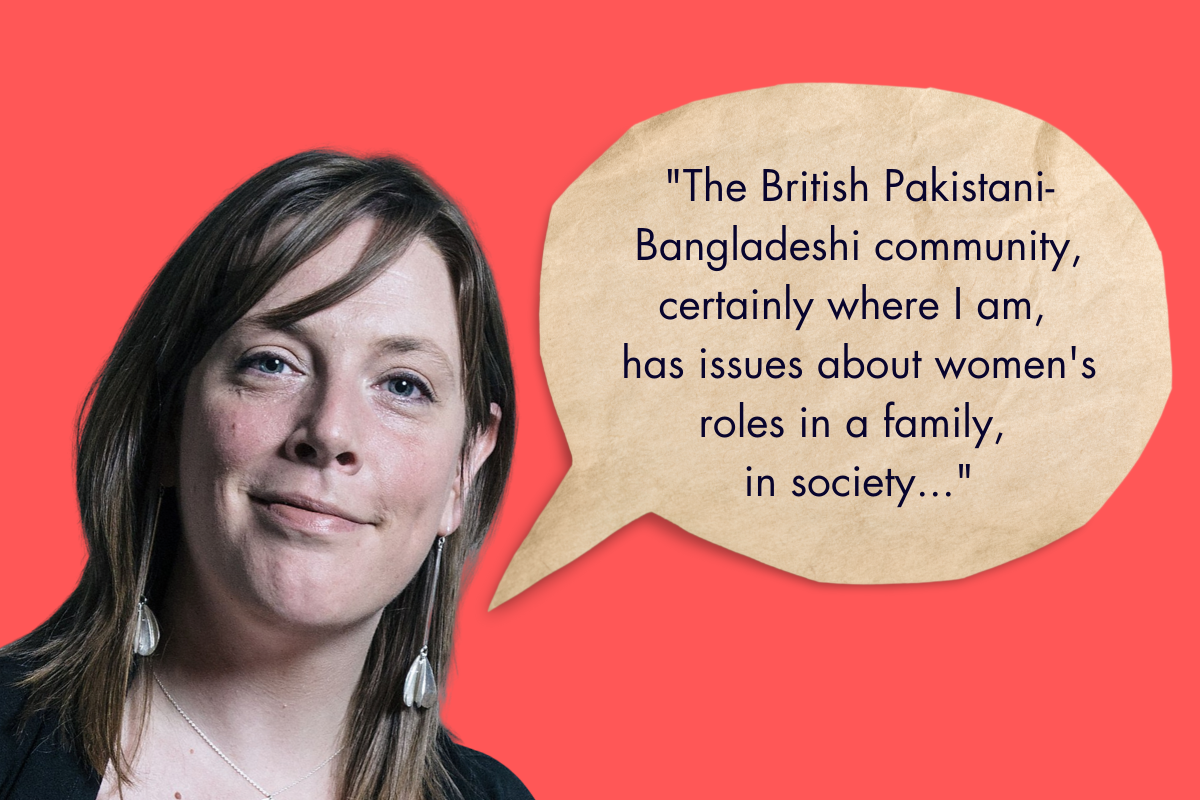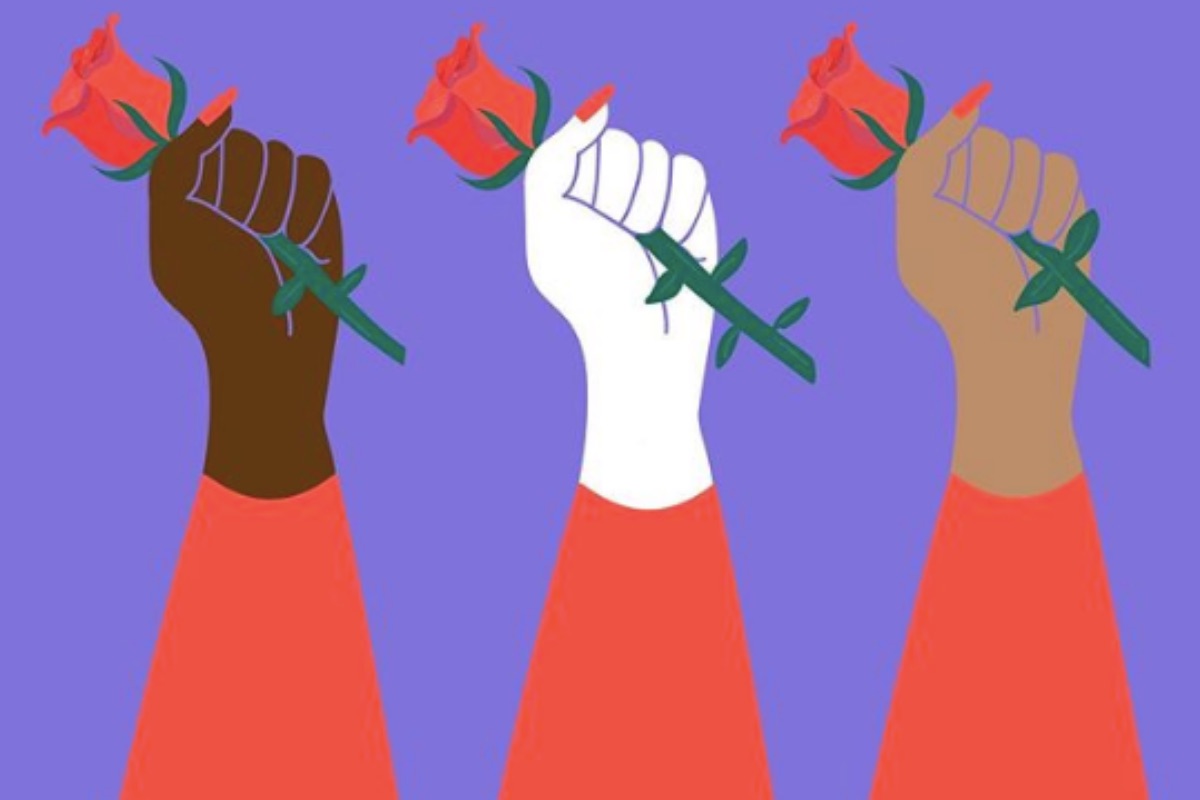
It’s been a fantastic year for gal-dem, as our editor, Liv, explained yesterday. But we also felt it was appropriate to recognise not only how far we’ve come, but the fantastic people who have been making progressive waves in 2015. This list was collated by all of the gal-dem, and we hope that you’ll agree that they deserve to be on it!
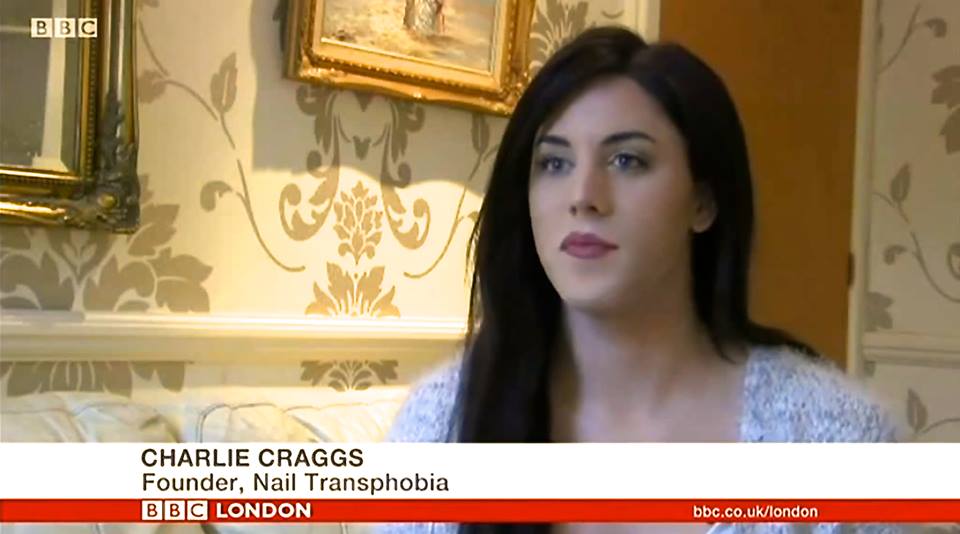
30. Charlie Craggs – For speaking up on trans issues – Charlie Craggs has had a whirlwind of a year. A trans activist who raises awareness through her self-funded campaign, Nail Transphobia, Craggs explained her motivations to gal-dem earlier this year. “I go round the country doing events and teaching people to be trans allies. I do peoples’ nails, they take a sassy nail-fie [nail selfie], and then upload it to social media with the hashtag #nailtransphobia. But the actual process is just as important. Just talking about Beyoncé with a stranger who might have some misconceptions about trans people from the media does genuinely change what people think,” she said.
29. Rowan Blanchard – For her Instagram essay on intersectional feminism – Intersectional feminism seems a pretty obvious idea to us; that other factors, such as sexuality and race, can and should be acknowledged in the struggle against sexism. However, in many feminist circles, sadly this is not the case, as 14-year-old Disney actress Rowan Blanchard tackled in her Instagram essay on ‘white feminism’. “‘White feminism’ forgets all about intersectional feminism,” she wrote. “The way a black woman experiences sexism and inequality is different from the way a white woman experiences sexism and inequality. Likewise with trans women and Hispanic women.”
28. Bahar Mustafa – For exposing how fragile the white patriarchy is – Goldsmiths, University of London, hit the media spotlight in April this year, when one of its student’s union officer’s, Bahar Mustafa, had organised a ‘BME women and non-binary’ event and requested that white people and men did not attend. Uproar ensued, both within the university (a petition campaigning for Mustafa’s removal was created and signed by students and non-students) and across social media platforms and within the tabloid press. When a historic tweet by Mustafa brandishing the hashtag ‘#KillAllWhiteMen‘ was then unearthed, the situation escalated to a police investigation. Yet among the personal insults, mud-slinging and short-sighted criticisms of Mustafa and her actions, existed a prominent section of media platforms which produced and encouraged thoughtful discussions on complex issues like the power of language in the politics of oppression and the importance of social context when considering how harmful or harmless our words (like #KillAllWhiteMen) are. Later in the year, the situation became messier still when Mustafa stepped down from her role amid accusations of bullying from other student representatives. Nonetheless, Mustafa remains an influential figure in racial politics in 2015, albeit somewhat unintentionally; the saga prompted an interesting and much-needed discussion on the language of oppression that was as complex as the matter is, and on a nationwide scale that, for such a niche topic, was previously unheard of.
27. Zendaya – For schooling the world on her ‘locs’ – When actress Zendaya attended the Oscars in February, wearing fabulous fake ‘locs’, a commentator from E!’s Fashion Police, Giuliana Rancic, said that she looked like she “smells like patchouli oil. Or, weed.” 18-year-old Zendaya responded on Instagram. “There is already harsh criticism of African-American hair in society without the help of ignorant people who choose to judge others based on the curl of their hair. My wearing my hair in locs on an Oscar red carpet was to showcase them in a positive light, to remind people of color that our hair is good enough,” she said.
Glad to see so much vocal support (especially online) for the refugees arriving today. #refugeeswelcome pic.twitter.com/WqgKlY30UD
— Mhairi Black MP (@MhairiBlack) November 17, 2015
26. Mhairi Black – For not letting her age get in the way of her voice – SNP politician Mhairi Black made history after being elected in May aged 20, as the youngest ever woman in parliament (and the second youngest MP in UK history). But Black, now aged 21, didn’t stop there. Her maiden speech in the House of Commons marked her out as a politician to be reckoned with, and has been watched over 10 million times. She explained that one of her constituents had been suffering due to the Conservatives’ strict benefit sanctions. “We now have one of the most uncaring, uncompromising and out–of–touch governments that the UK has seen since Thatcher,” she said.
25. Bree Newsome – For scaling a pole to cut down the confederate flag – The confederate flag is a highly controversial symbol in America because of its links to the American Civil War and the resistance against the abolition of black slavery. Campaigners in the states have been rallying against it being flown for years but, in June, activist Bree Newsome took matters into her own hands and pulled down the flag which was flying outside a government building in South Carolina. “For far too long, white supremacy has dominated the politics of America resulting in the creation of racist laws and cultural practices designed to subjugate non-whites,” she said in a statement.
24. Brandon Stanton – For reminding the world of the need for humanity – When the tragic photograph of Alan Kurdi went viral in September, the west’s reaction to the ongoing refugee crisis was drastically changed. Brandon Stanton, who runs the incredibly popular Facebook page Humans of New York, has also been using his photography skills to remind the wider world of the humanity of those fleeing Syria by profiling dozens of refugee families making their way to America. He set up a fundraising page for them which has made nearly $800,000 in the past five days.
23. Taraji P Henson – For killing it in Empire – When Empire aired back in January, it answered all our prayers for more minority representation on the small screen and was a huge hit. This success was in no small part down to the beloved matriarch Cookie Lyon, played by the outstanding Taraji P. Henson. Even though Empire has its flaws and is more than a little bit problematic (isn’t everything though?), we tuned in week after week to see Cookie’s fabulous wardrobe and unbeatable one-liners. It’s no coincidence that Taraji P. Henson’s character is the only consistently likeable one on the show. Henson brings a lot of warmth and comedic flair to her lines to make Cookie three dimensional in what seems to be a sea of soap opera villains. After almost 20 years in Hollywood, it’s a delight to see Taraji P. Henson get her dues.
22. Laith Ashley – For being a peng purveyor of male trans visibility – From Caitlyn Jenner to Laverne Cox, it’s been a great year for seeing transgender individuals in our media. Male model and Instagram heartthrob Laith Ashley is another name to add to the list. Alongside serenading his online followers with his beautiful singing voice and cementing his male model status by posing in CK briefs, Laith Ashley has posted online videos about his transition providing an under-represented public voice for transgender men. He’s basically the heart-eyes emoji personified.
21. Noma Dumezweni – For embodying black Hermione – Swaziland-born actor Noma Dumezweni made headlines in December after it was announced that she would be playing Hermione in the upcoming Harry Potter stage show. She won the approval of JK Rowling, who said that she “loves” black Hermione, and certainly resembles the character that many little gals like us grew up with. The 46-year-old Olivier award-winning actress has not been afraid of breaking down colour barriers in the past. She’s currently starring in Linda at London’s Royal Court Theatre – a part originally meant for Sex in the City‘s Kim Cattrall, who is white.
NOW! @BEATS1 with @CraigDavid @BigNarstie NEW @KatyB @Charli_XCX @LEVELZMCR PLUS a SPECIAL #OTHERtone announcement! pic.twitter.com/CeZVeiq5Kd
— Julie Adenuga (@JulieAdenuga) December 17, 2015
20. Julie Adenuga – For putting UK music on the map – From Stormzy trumping the X-Factor tradition, to BBK’s legendary performance at The Brit Awards with Kanye backing them, 2015 has been a corker for UK music finally having it’s time to shine. Hailing from East London, Julie Adenuga comes from a family blessed with creative talent. But she’s a rising star in her own right and, in 2010, she joined 20-year-strong British pirate-turned FM radio station, Rinse FM, and hustled her way into her own show, ‘Drivetime with Julie’. From there, she managed to secure the position of London host on Apple’s recently launched Beats 1 radio, alongside broadcasting veterans Zane Lowe and Ebro. Throughout all of this, Julie is passionate about supporting homegrown talent. She had her own web series Play It, in which she gave UK rap and grime artists, poets and singers a platform to promote themselves. Adenuga’s the one to thank for the petition which secured the Godfather of Grime, Wiley, a statue in Bow. Put simply: she’s an authentic tastemaker and she’s taking the UK to the world.
A photo posted by MIA (@miamatangi) on
19. M.I.A. – For letting her music be political – Mathangi “Maya” Arulpragasam is no stranger to censorship for calling out political controversy bluntly. She’s the daughter of an activist and experienced the perils of the Sri Lankan Civil War first-hand. While we’re not trying to paint a sob story here, these events which made up her formative years are hugely significant to her as an artist. In July, she released an audiovisual ‘Matahdatah Scroll 01 Broader Than A Border’ showcasing dance styles native to the countries it was filmed in – India and Cote d’Ivoire – featuring her tracks ‘Warriors’ and new track ‘Swords’. This was shortly followed by the release of ‘Borders’, with a no-nonsense, evocative visual, chastising world leaders’ slow response to the outpour of war-torn citizens. It’s a bold social commentary on the refugee crisis and the general concept of closing borders to those seeking asylum. Like many of her other videos, the visual was directed by M.I.A herself. Using similar imagery regularly used to report such crises in a removed stance, M.I.A puts herself on the side of the underdog: jumping barbed-wire fences, sitting on overflowing boats, as an act of solidarity – in a similar no-fucks-given manner executed by Pussy Riot.
18. Nikesh Shukla – For starting a campaign for diversity in publishing – Novelist Nikesh Shukla has spent the year consistently rallying against the white and eurocentric publishing industry. From speaking out about his own experiences in the publishing world as a South Asian author, to speaking on diversity panels, to publicly questioning the lack of BAME authors included in World Book Night 2016, his activism is making sure the publishing industry takes note. Not content with waiting for the publishing industry to wake up, he has opened his emails to emerging writers to pass on their contacts to industry professionals himself, and he’s also editing a book of essays by BAME authors called The Good Immigrant because, if you want something done well, you might as well do it yourself.
17. Chescaleigh – For all of her YouTube schooling – Franchesca “Chescaleigh” Ramsey’s online success has been one of the most rewarding stories to watch this year. Aside from her work as a freelance graphic designer, actress and natural hair loc guru, the online sensation now hosts MTV’s most ambitious (and long overdue) news web series ‘Decoded’, tackling “race, pop culture, and other uncomfortable things, in funny and thought-provoking ways”. Chescaleigh’s frank explanations, creative comedic delivery and open acceptance to critique makes her content honest, educating, and exactly what you need at the right time. I highly recommend checking out her YouTube playlist: 10 things I don’t understand about the Zimmerman Verdict and videos No Mo’ “No Homo” and The N-Word “Double Standard” before heading over to watch her school Spike Lee on his own film. We can’t wait to see what she has in store for us in 2016.
15. June Eric-Udorie – For taking on the establishment – A young journalist and feminist campaigner, June Eric-Udorie bleeds the word precocious. The 17-year-old has written extensively on feminism and race for the Guardian and the New Statesman. However, the reason why she has made it onto this list is due to a recent incident where she was attacked by fellow journalist Julia Hartley-Brewer in a vicious piece for the Telegraph after the pair appeared on a panel together. Her response was dignified. “I’m not engaging anymore, Julia. You attacked a young woman in the press. You got the attention. Well done. Goodbye,” she wrote on Twitter.
14. Janet Mock – For her book and her TV show So Popular! – Writer of a New York Times bestseller, advocate and MSNBC TV host Janet Mock has carried the success of her 2014 memoir Redefining Realness through to 2015, combining theoretical perspectives with a weekly dissection of pop culture stories on her online show SoPOPular! Equipped with an ability to articulate concise thought-provoking critique, a host of equally intelligent pals and a prime online spot, Mock continues to work to present an in-depth examination of mainstream trends. From discussing the appropriation of Hawaiian culture to the language used when describing attraction to transgender individuals, to curly girl appreciation with Tracee Ellis Ross, Janet has it all covered.
13. Erykah Badu – For being queen of everything – It is a widely-known and celebrated fact that Erykah Badu is quite literally the queen of everything and, in 2015, she showed absolutely no signs of slowing down. From her surprise mixtape that dropped in July with the title ‘feel better world!’, to her inimitable Twitter which featured this philosophical acceptance of age and beauty earlier in the month, Badu has been an ever present commentator on the state of affairs both in music and the African-American community. Perhaps our favourite Badu moment this year was the landing of her new mixtape release But You Caint Use My Phone; a cellular obsessed tape with some tracks derived from Drake’s ‘Hotline Bling’, reminding us of her ‘…& On’ lyric ‘analogue girl in a digital world’. Badu’s performance at the 2015 Soul Train Awards of ‘Phone Down’ literally had her putting audience members’ phones down, and we’ll never forget the way she called Iggy Azalea out on her ‘rapping’. All we can say is long live Queen Badu.
A photo posted by Serena Williams (@serenawilliams) on
12. Serena Williams – For her well-earned confidence – Serena Williams has known she’s a boss since she was 11-years-old. When asked what tennis player she wanted to be like on a T.V programme in 1992 she said, “I want other people to be like me.” However, despite her ongoing successes (Williams is reigning champion of the Australian Open, French Open, Wimbledon and Olympic women’s singles and doubles), sadly the sportswoman has faced ongoing criticism, often of her strong, powerful body which has been deemed “masculine”. While Williams admits to struggling with her body type, earlier this year she said she “realised that you really have to learn to accept who you are and love who you are. I’m really happy with my body type, and I’m really proud of it.” She’s certainly an inspiration in physicality and sport for many women who don’t fit into the thin, white mould.
10. Siana Bangura – For not being silent – In October Siana Bangura was verbally and physically attacked by a racist on a train in Liverpool. The ensuing storm that she kicked up over her treatment is worthy of praise in itself (she told the man exactly what she thought of him and informed the media about what had happened), but she also highlighted the fact that in too many of these incidents witnesses of racial abuse tend to stay silent. “I was the victim of a hate crime and not once did anybody ask if I was okay. Instead, they tried to silence me,” she wrote.
26 miles | 26 years | 26th of April
A photo posted by Kiran Gandhi (@madamegandhi) on
9. Kiran Gandhi – For running the London Marathon on her period – Shifting your ass anywhere when on your period can be a chore, let alone running 26 miles, but for Kiran Gandhi it was worth it. The 26-year-old, who used to drum for M.I.A, decided to free bleed on the run to raise awareness about the lack of sanitary products available to some women worldwide, but the gal-dem also think it helped to address the ridiculous embarrassment we foster towards periods in our own society. “I ran with blood dripping down my legs for sisters who don’t have access to tampons and sisters who, despite cramping and pain, hide it away and pretend like it doesn’t exist,” Gandhi wrote on her website.
8. Ava Duvernay – For Selma – Not only is she an incredible filmmaker and the first African American woman to win a Sundance award and Golden Globe nomination, Ava DuVernay is also an outspoken activist on social justice issues like the prison-industrial complex in the U.S, writing a film and an upcoming documentary on that very subject. She is not shy when it comes to speaking out against systematic misogyny in Hollywood – only 4% of studio directors are female and the number of black female directors is a fraction of that – and has dedicated her time towards supporting up and coming filmmakers through her own distribution company. Is there a better role model for young girls everywhere than Ava DuVernay? Even Barbie seemed to agree, creating a doll in her likeness with her signature locs and black turtleneck. They sold out just before Christmas but we can’t wait to get our hands on one.
7. Amandla Stenberg – For shutting down Kylie Jenner – Amandla Stenberg’s breakdown of cultural appropriation went viral for good reason. Stenberg, who is known for playing Rue in the first Hunger Games movie, put it down hard in her YouTube video, Don’t Cash Crop on my Cornrows. However, she also had a little to say to Kylie Jenner when the 18-year-old posted a brooding Instagram shot of herself with cornrows back in July. “When u appropriate black features and culture but fail to use ur position of power to help black Americans by directing attention towards ur wigs instead of police brutality or racism #whitegirlsdoitbetter,” Stenberg commented on the photo.
6. Jeremy Corbyn – For showing his support for those at the bottom – In an interview with the Financial Times in August, Labour leader Jeremy Corbyn said, “I think there is far too much concentration in the hands of too few and so I would look at that again. Diversity in media is something that is intrinsic to a democratic society.” Agreed, Jezza. Having swept to an unprecedented victory in the Labour leadership campaign earlier this year, up against the likes of “I would back the aspirations of the white working class” Liz Kendall, Corbyn is one of those rare principled politicians who has always supported those at the bottom of society. This is despite an all-round roasting by pretty much every national media outlet, minus the Huffington Post. We respect and support.
5. Michaela Coel – For making us keel over with laughter during Chewing Gum – Chewing Gum, starring Michaela Cole, was one of those rare programmes broadcast this year that made us genuinely hysterical with laughter. Cole plays the incredibly kooky, mildly disobedient daughter from a god-fearing Nigerian family, and puts her expressive features to good use in scenes which see her awkwardly exploring her sexuality with her boyfriend, and looking for a new job on a council estate somewhere in London. It was so refreshing to see a black woman take centre stage in a multicultural comedy which totally deserves the second season renewal which was recently confirmed.
4. John Boyega – For remembering he’s from Peckham – You might imagine that being a part of the most lucrative franchise in the history-of-ever might go to your head. Not so for John Boyega, the Peckham-born lead of Star Wars: The Force Awakens. As well as telling the racist commentators out there that he was a “confident, Nigerian, black, chocolate man”, and that they were “victims of a disease in their mind”, when speaking with the New York Times, he also brought his man-dem down from ends for his red carpet appearance at the London premiere of the movie.
3. Cecile Emeke – For providing a voice to the black diaspora – Cecile Emeke has had an amazing year. Her web series Ackee and Saltfish, following the fictional friendship of Olivia and Rachel, launched in January and quickly became a cult hit. It manages to be both realistic, funny and desperately important in a climate which still fails to portray young black women as fully as it should. Emeke also writes brilliant poetry, and is currently producing a docu-series called Strolling, which aims to connect “the scattered stories of the black diaspora”.
2. Viola Davis – For her Emmy’s speech after becoming the first WoC to win best actress – The Emmys back in September were a groundbreaking event for WoC in Hollywood and beyond. Viola Davis became the first African-American actress to win the best actress in a drama series award for her role as Annalise Keating in ABC’s How to Get Away With Murder, and boy was it a win. With a formidable acting career already under her belt from standout roles in The Help and the James Brown biopic Get On Up, Davis has been a trailblazer in exposing the lack of diversity in the film industry, especially in terms of the difficulties that WoC face in getting leading roles. In the words of Davis’ powerful acceptance speech, the audience and the millions of people watching heard – and felt – that “the only thing that separates women of colour from anyone else is opportunity. You cannot win an Emmy for roles that are simply not there.”
1. Liv Little – For creating gal-dem – Our very own editor-in-chief, Liv Little, definitely deserves her spot on this list. gal-dem, which launched in September after being conceived during the summer by Little, has been a fantastic space for all involved, and we’re so grateful for all of her hard work and dedication. Here’s to 2016!

